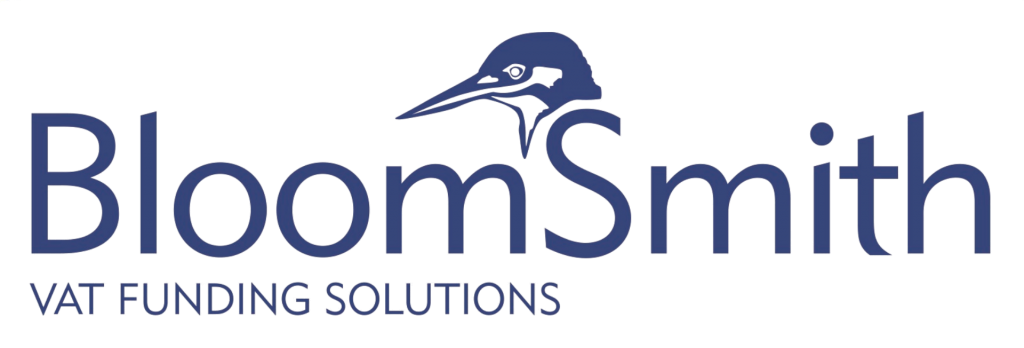Loan to Value (LTV), why VAT makes a difference and how BloomSmith can solve the LTV – VAT problem.
Getting the LTV right is vital for any commercial property buyer or developer. The right LTV will balance your loan with the equity available and can impact the profitability or ROI of your project.
What you don’t want though is for any part of your equity funding to be tied up in a VAT reclaim for several months. If HMRC has your money, even temporarily, that means you can’t use the funds for anything else.
Nigel Smith, one of BloomSmith’s directors, helps translate some of the terminology and explains why VAT funding, (sometimes referred to as a “VAT bridge”), can make a real difference to your property transaction. If you’d like to talk to him about how BloomSmith VAT funding can help, just get in touch.
What is LTV?
The Loan to Value (LTV) ratio is the ratio of the debt to the value of the property (or development). Generally, the higher the LTV, the greater the likely cost of the money lent.
For example, if you’re buying a property valued at £1m, a lender might be prepared to lend you £600,000 against that property. That is a 60% LTV.
The LTV goes up if the level of debt increases or the value of the property decreases. The LTV goes down if debt levels decrease or property values increase. This can happen at anytime, not just at the point of transaction.
The LTV a lender might accept is affected by the risk in a project and the lender’s appetite for that risk. This can be reviewed at any time and again, not just at the point of transaction.
How does VAT affect LTV?
LTV may not tell the whole story of the equity you need. The equity a project might require includes all the costs and, importantly, will include the 20% VAT due on the purchase price. When the LTV is calculated, the VAT figure is not included. So, the VAT amount acts to reduce the equity available – at least until you can claim it back from HMRC.
This can be a surprise to advisors and principals alike.
Here’s an example:
- You are buying a property for £1m.
- There is a VAT liability on the property of 20% or £200,000.
- You have £400,000 of equity.
- At 60% LTV, on the property worth £1m, you will get £600,000 in lending.
- You still have to find £200,000 to cover the VAT liability on the property.
- So, either you have to find more equity, or you need more lending.
- You’d need 80% LTV to cover the VAT liability as well with the £400,000 of equity you have.
- 80% LTV is unlikely to be easy to find. The cost of the money would be high, potentially for the duration of the project.
- You need to find another solution to cover your VAT liability.
Where does BloomSmith VAT Funding fit in?
BloomSmith can provide VAT funding to cover the VAT element of your transaction.
We can do this without taking a legal charge on your property.
This means your LTV is unaffected by your VAT liability. In our example above, that would mean you get a £600,000 loan from your lender (at 60% LTV) and BloomSmith covers the £200,000 of VAT.
With less of your equity tied up, so the equity you have can be used to fund other purchases or development costs.
What difference does it make if VAT funding can be arranged without taking a charge on a property?
It makes all the difference, especially in this lending environment! This is because very few senior lenders are prepared to accept a second charge on a property they hold as security. So, taking a second charge for a VAT funding loan could cause a huge problem for your senior lender and their loan.
A BloomSmith loan is the perfect solution – if our process is followed, we are able to lend the VAT due on your property purchase without taking any legal charge on your property.
Why is BloomSmith lending different?
BloomSmith lending is cheaper and faster than secured lending. Our systems and processes mean we can fund 100% of the VAT required in just 48 hours.
How can BloomSmith do this?
BloomSmith can lend cheaply, quickly and without taking a charge on a property because we don’t rely on any third-party lending, who require traditional security, for our funds. We’re not a peer-to-peer lender, nor are we a fund-based or bank-backed business. BloomSmith lending is funded entirely by shareholder capital.
What’s the difference between Loan to Value (LTV) and Loan to Cost (LTC)?
LTV doesn’t take into account the VAT due on commercial real estate transactions or all of the costs. This is because valuers and buyers assume they will get the VAT amount back as a rebate from HMRC. That’s true but… you may have to wait two to three months for a VAT reclaim to be processed before the money is back in your account. In the meantime, these costs need to be met.
What is considered high LTV?
During our careers we’ve seen LTV’s as high as 95% and LTV’s as low as 40% and lenders’ appetites for risk will depend on the economic environment.
In today’s market an LTV of 45 – 60% is considered normal.
There’s always a big “BUT…” though when it comes to LTV’s. Property values must be up to date when the LTV is calculated, and the market status must be recognised. Getting up to date valuations can be a problem when markets receive shocks (as we’ve had recently). Margin calls may become the norm, which is another good reason to safe guard equity.
What is a good LTV?
A good LTV ratio balances the cost of the loan with the equity available and take into account the profitability of a project.
How does the LTV ratio affect lending rates?
The higher the LTV, the higher the likely cost of the loan. That works in reverse as well, so the lower the LTV the less you’re likely to have to pay for the loan.
What does 60% LTV mean?
This is most easily explained with an example:
- The property you are buying is valued at £1million.
- The lender is willing to lend you £600,000 against this property.
- That’s a 60% Loan to Value or LTV
How do you calculate LTV?
Loan available / Property value = LTV.
Loan to Cost (LTC) vs Loan to Value (LTV)
Loan to cost (LTC) differs from LTV in that it measures the ratio between the total loan amount and ‘cost’ of the project. The cost of the project may be the purchase price of the property plus VAT and other expenses.
How do you calculate Loan to Cost (LTC)?
Loan available / Property value plus actual costs including VAT = LTC.
This gives your actual equity requirement without BloomSmith.
Interested to find out how BloomSmith’s VAT funding could help in your commercial property transaction?


